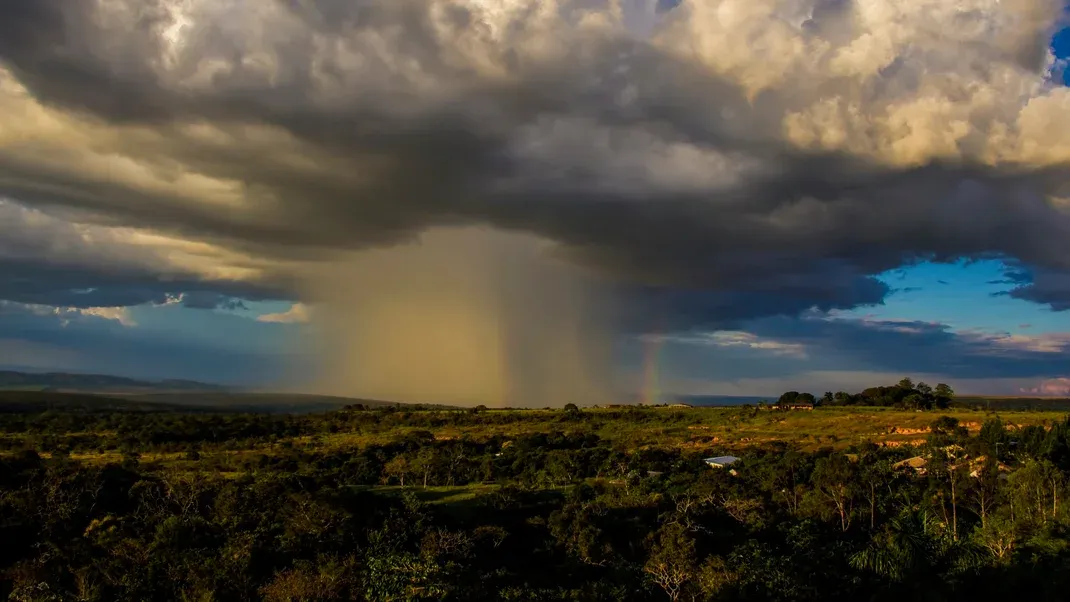Phenomenon: Microbursts Are Miniature Storms That Come Out of Nowhere
Microbursts are small-scale, intense downdrafts of air that can result in sudden and powerful winds. These mini-storms are typically caused by a small, intense thunderstorm or a rapidly descending column of cold air. Microbursts can be extremely dangerous for aircraft, as they can cause sudden changes in wind speed and direction, posing a serious hazard during takeoff and landing. They are also a significant threat to buildings, trees, and other structures on the ground. Microbursts are difficult to predict and can appear seemingly out of nowhere, making them a unique and potentially deadly weather phenomenon.

Phenomenon: Microbursts Are Miniature Storms That Come Out of Nowhere
Microbursts are a fascinating and potentially dangerous weather phenomenon that have intrigued scientists and weather enthusiasts for decades. These miniature storms, which can pack winds of up to 100 miles per hour, are capable of causing significant damage and posing a serious threat to aviation. Despite their small size, microbursts are a force to be reckoned with, and their unpredictable nature makes them a challenging subject for meteorologists to study and understand.
Microbursts are characterized by their sudden and intense downdrafts of air, which can result in a rapid and localized burst of damaging wind. These powerful gusts are often accompanied by heavy rain, hail, and lightning, making microbursts a formidable weather event that can catch even the most experienced meteorologists off guard. The sheer force of these mini-storms has led to numerous instances of property damage, power outages, and even fatalities, making them a significant concern for both the general public and the aviation industry.
One of the most intriguing aspects of microbursts is their ability to seemingly appear out of nowhere. Unlike traditional storm systems, microbursts can develop rapidly and without warning, making them a particularly challenging weather phenomenon to predict and prepare for. This unpredictability has led to numerous instances of microbursts catching pilots and air traffic controllers off guard, resulting in dangerous and potentially deadly situations for aircraft in the vicinity.
In addition to their sudden onset, microbursts are also known for their short duration, with the most intense winds typically lasting for only a few minutes. This brief but intense burst of wind can have a devastating impact on structures, vegetation, and aircraft, making it essential for meteorologists and aviation professionals to have a thorough understanding of microburst behavior in order to mitigate their potential impact.
In recent years, advances in weather radar technology have allowed meteorologists to better detect and track microbursts, providing valuable data that can be used to improve forecasting and warning systems. Doppler radar, in particular, has proven to be a valuable tool for identifying the telltale signs of a microburst, such as strong downward motion and a distinct outflow pattern. By analyzing these radar signatures, meteorologists can gain a clearer understanding of the atmospheric conditions that are conducive to microburst formation, allowing for more accurate and timely warnings to be issued.
Despite these advancements, microbursts remain a challenging weather phenomenon to study and predict. Their small size and rapid development make them difficult to detect and track, and their ability to form in a wide range of weather conditions further complicates the forecasting process. As a result, microbursts continue to pose a significant threat to aviation safety, with pilots and air traffic controllers relying on accurate and timely weather information to navigate these potentially hazardous conditions.
In addition to their impact on aviation, microbursts also pose a threat to the general public, particularly in areas prone to severe weather. The sudden and intense winds associated with microbursts can cause widespread damage to trees, power lines, and buildings, posing a significant risk to property and personal safety. As a result, it is essential for individuals to be aware of the potential for microburst activity in their area and to take appropriate precautions when severe weather is forecasted.
In conclusion, microbursts are a formidable and potentially dangerous weather phenomenon that can have a significant impact on both aviation and the general public. Their sudden onset, intense winds, and unpredictable nature make them a challenging subject for meteorologists to study and understand, and their potential for causing damage and posing a threat to safety makes them a significant concern for both the aviation industry and the public at large. As our understanding of microbursts continues to evolve, it is essential for meteorologists, aviation professionals, and the general public to remain vigilant and prepared for the potential impact of these miniature storms.






